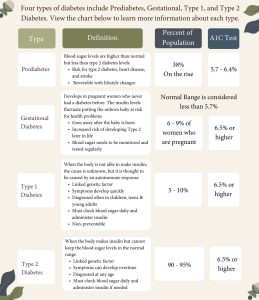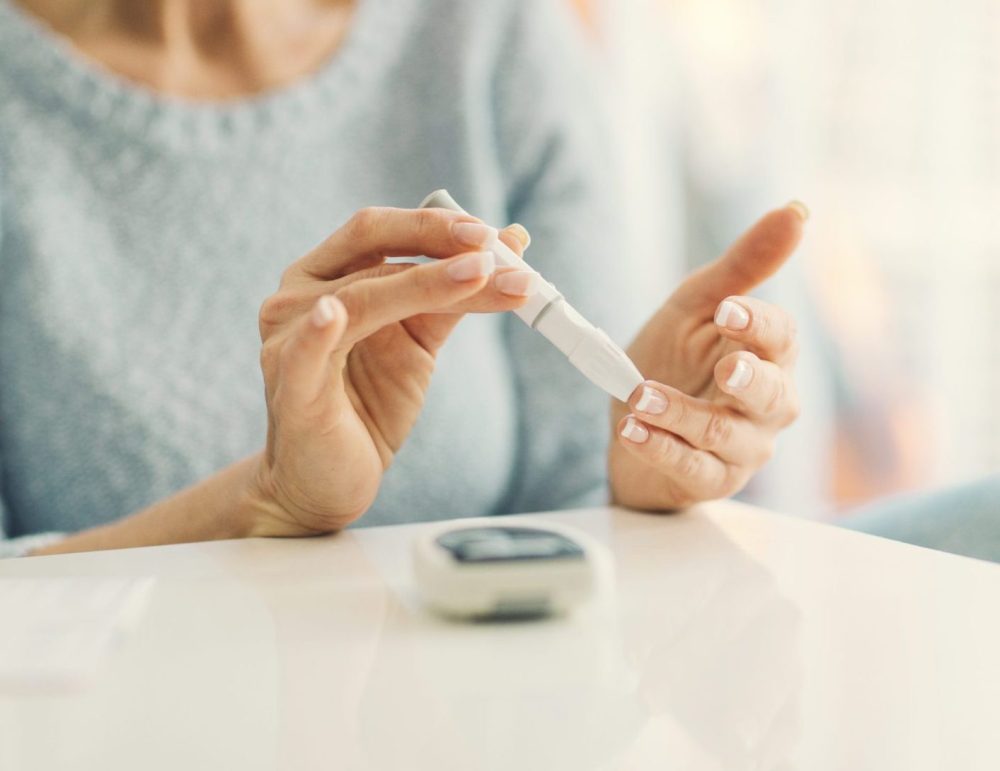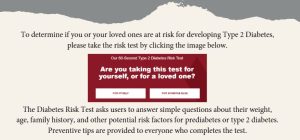November is National Diabetes Awareness Month. Diabetes is a chronic health condition that affects how your body turns the food you consume into energy. When the food you consume is broken down in your digestive tract, it turns into glucose. Your body’s response to this process is to increase your blood sugar levels, signaling your pancreas to release insulin. Insulin is the key to allowing your body to store blood sugar in its cells to be converted into energy.
If you have diabetes, high blood sugar levels in your bloodstream lead to many health complications. Diabetes is diagnosed in multiple ways, but the leading diagnostic tool is to test your A1C (average blood glucose) level. A1C results greater than or equal to 6.5% indicate you have diabetes.
Early detection and treatment of diabetes can decrease the risk of developing other health complications. Although the symptoms outlined below are common, the main difference between them is the cause, the age at which you are diagnosed, and when your symptoms appear. Unfortunately, gestational diabetes is the only type in which women often have no symptoms.
Symptoms of Diabetes:
-
-
-
- Increased Thirst or Hunger
- Unexplained Weight Loss (Type 1)
- Frequent Urination
- Fatigue
- Blurred Vision
-
- Frequent infections, slow healing of cuts, bruises, or sores
- Tingling, pain, or numbness in hands/feet (Type 2)
-
According to the Centers for Disease Control (CDC), the most recent estimates in diabetes diagnosis and care indicate:
- Diabetes is the 7th leading cause of death in the United States
- 3 million Americans have diabetes – 1 in 10 people
- On average, 90% of those people have Type 2 Diabetes
- 96 million Americans have prediabetes – 1 in 3 people
- 8 of 10 people don’t know they have prediabetes
- Diabetes is the No. 1 cause of kidney failure, lower-limb amputations, and adult blindness.
- In the last 20 years, the number of adults diagnosed with diabetes has more than doubled.
According to the American Diabetes Association, you are at a higher risk of developing diabetes (excluding Type 1) based on genetics, race, ethnicity, age, and weight factors.
Additionally, risk factors for type 2 diabetes include people who are overweight, underactive, older than 45, or with a family history of diabetes. In addition, African Americans, Hispanics/Latinos, Native Americans, Asian Americans, and Pacific Islanders are also at higher risk. Understanding your risk for developing type 2 diabetes or getting an early diagnosis is critical to successful treatment and delaying or preventing some of its complications, such as heart disease, blindness, kidney disease, stroke, amputation, and death.
While the above risks may be troublesome, gestational and type one diabetes can be controlled if you & your healthcare team create a personalized plan for managing diabetes. Early treatment and prevention mechanisms can return blood glucose levels to their normal range, preventing the progression of diabetes.
Research has shown that you can lower your risk for prediabetes and type 2 diabetes by 58% by:
-
-
- Being Active: Activity is as effective in lowering blood sugar as medication. In addition, the World Health Organization recommends being active for at least 150 minutes a week or 30 minutes of exercise a day, five days a week. Furthermore, exercising moderately, such as a brisk walk, can make an impact.
- Losing Weight: Weight loss may be a good option if you have a BMI of over 25. Consult your doctor to discuss the best way to lose weight through exercise and a healthy diet. Losing 7% of your body weight (10-14 lbs. for a 200 lb. person) can make a huge difference in blood sugar levels as it helps lower insulin resistance. To check your BMI today, please visit Adult BMI Calculator | CDC.
- Eating a healthy diet: While there is not anything you cannot eat, remember variety, balance, and moderation of portions are essential. Especially when managing diabetes, carbohydrates or carbs are critical in blood sugar levels. The three main types of carbohydrates found in foods are starches, sugar, and fiber. When choosing foods with carbs, the goal is to choose nutrient-dense carbs, which are rich in fiber, vitamins, and minerals and low in added sugars, sodium, and unhealthy fats. To learn more about a healthy diet to manage diabetes, visit Tomah Health’s Diabetes Nutrition Wellness Article.
-
-
-
-
-
- Higher fiber foods help you control your appetite and do not cause blood sugar to rise as high after eating.
- Definitely choose whole wheat bread, pasta, brown or wild rice, and whole fruits and vegetables when possible.
- Limit processed sugar and sweetened drinks like soda or coffee drinks. Instead, stay hydrated with water and low-sugar juices.
-
-
-
Receiving a Diabetes diagnosis is scary—but know that it does not have to stop you and your family from living a healthy life, as Tomah Health is here for you. Whether you are newly diagnosed, caring for someone with diabetes, or want to learn more, we can assist with education and any questions you have.
To learn more, consult your doctor or healthcare dietician to help you get more information on finding your balance and determining appropriate portions for healthy meals and snacks.
Sources:
“2. Classification and Diagnosis of Diabetes: Standards of Medical Care in Diabetes—2020.” American Diabetes Association, 16 Dec. 2019, diabetesjournals.org/care/article/43/Supplement_1/S14/30640/2-Classification-and-Diagnosis-of-Diabetes. “Diabetes Self-management Education and Support (DSMES).” Centers for Disease Control and Prevention, 13 July 2022, www.cdc.gov/diabetes/managing/education.html. Diabetes Symptoms, Causes, and Treatment | ADA. diabetes.org/diabetes. Accessed 4 Nov. 2022. November Fast Facts: National Diabetes Month. www.wha.org/vv-11-03-2022/12. Accessed 4 Nov. 2022. Tomah Health. “Are You at Risk for Type 2 Diabetes?” Tomah Health, 12 May 2022, www.tomahhealth.org/wellness/are-you-at-risk-for-type-2-diabetes.

